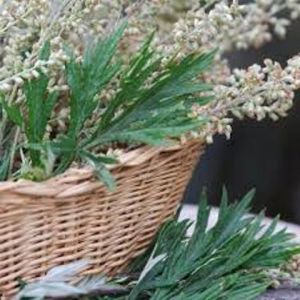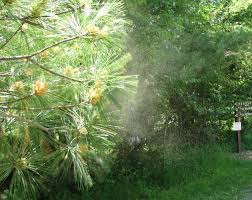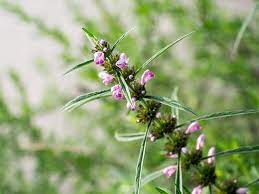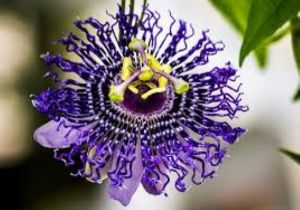_______________________________________________________________________________________________________________________
When I think of the heart, I think of the physical sacred place where the emotional body, the mental body and the spirit meet in the world of chakras. It is a place of green and pink, a place of balance! We all know when we are coming from a place of heart because it has a specific feeling.
Many of us have been taught that we must turn the other cheek to be in a place of heart, but sometimes, the most loving thing to do is to let the situation play out for the best possible outcome. This is not the same as the heartlessness I hear like 'live by the sword, die by the sword' and such like expressions but rather a compassionate understanding that all things must come back to a state of love for full resolution, and that can get messy.
In this heart place, we have empathy, compassion and an understanding that all is sacred and that we are all connected. Our heart's decisions are usually correct when we come from that understanding.
We suffer heart pain from loss, betrayal, evil and more. As uncomfortable as that is, thankfully, our hearts can still feel, or what is the point of being here? Our hearts on all levels can heal, but some effort is required. This will involve allowing ourselves to release the grief, anger and fear that has built up within us and let it go. I call this release 'heart song" in my practice as a healer because I know the heart is healing itself as painful as it can to experience and witness.
The reflection of the strength of our hearts is the physical heart itself, which is one tough muscle with four chambers which pump life-giving blood every few seconds for our entire life. Truly amazing!
To care for one's heart is to care for oneself on all levels. Your heart is not just a pump that you can abuse or neglect; it will keep pumping. It is affected by all of you: your emotions, your mental state, your spiritual practices or lack of and, of course, your physical care.
Keeping one's life in balance allows the heart to do the same. Eat right, sleep, exercise, rest, have fun, fall in love, and be mindful of this amazing life and heart you have been gifted.
Today's talk will discuss one of my favourite plant families, the rose family and its relationship to the heart and circulatory system. Rose has long been associated with love and the heart. Many rose family plants are excellent for healing broken and hurting hearts. One can take in the rose family plant's energy; you are protected and rocked as you heal. The rose family traditionally has thorns, and they are for their protection, which extends to you when you reach out for the rose's help.
Of course, because Mother Earth is infinitely wise, she has provided us with the hawthorn tree, which in Western herbology is our chief circulatory and heart medicine and is a member of the rose family.
Hawthorn is a mythical tree surrounded by folklore and tales throughout many cultures and traditions. The Celts considered it very dangerous to damage a Hawthorn tree in any way so as not to hurt the wee folk (fairies) because doing so would bring bad luck. For that very reason, you will see lone Hawthorn trees sitting in the middle of farmer's fields and roads being diverted around them.
Hawthorn wood is solid and dense, just like the heart muscle tissue. The entire tree, its leaves, flowers and berries, are revered by all healers worldwide for their healing properties.

As stated earlier, the Hawthorn tree is part of the Rose family and, as such, is noted for its predominantly sour taste, indicating an astringency property of toning and tightening tissue. But Hawthorn also brings in a sweet taste for building and nourishing. Western herbalists use Hawthorn for its affinity for the heart, cardiovascular system, and other purposes.
'Hawthorn is food to the heart. As a tonic, it's restorative to the tissues of the entire cardiovascular system. From the capillaries to the heart itself, Hawthorn builds the structural integrity of the tissues, promoting increased function of the entire system and equilibrating any imbalances it may have (to a certain degree). Many other qualities of Hawthorn support its cardiotonic property, such as lowering serum cholesterol, increasing vascular elasticity, dilating blood vessels, and improving the tone of the heart itself.' Sajah Popham
Hawthorn is, by far, in Western herbalism, our chief cardiovascular remedy. Primarily, the berries are used, but all parts of the flowers and leaves are used synergistically to work holistically to balance the heart and cardiovascular system. The leaves help keep the elasticity of the blood vessels malleable and help prevent arterial plaque formation.
Hawthorn helps reduce blood pressure by opening and relaxing the blood vessels, relieving mild hypertension or blood pressure. More blood can flow through by relaxing the tissues, relieving the pressure.
An interesting note is Hawthorn can also help with low blood pressure. As well as relaxing the blood vessels, it also tightens and tones them, thereby assisting low blood pressure balance. This strengthening improves the entire cardiovascular system, thereby improving heart rate and force and the system's overall functioning.
The berries of the Hawthorn are red and contain flavonoids that protect the vasculature from oxidative (free radical) stress and damage and improve the elasticity of the arteries, preventing arteriosclerosis or the thickening and hardening of the arterial walls.
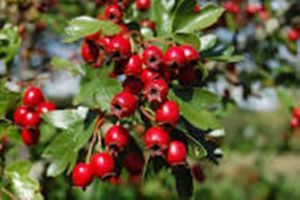
The beautiful red colour of the hawthorn berries.
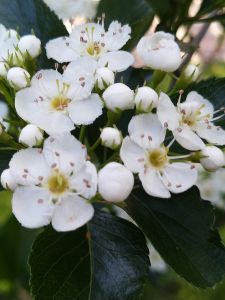
The five petalled hawthorn flowers.
Hawthorn has a positive effect on cholesterol and can lower LDL (low-density lipoprotein) or "bad cholesterol" levels and increase HDL (high-density lipoprotein) as well as lower fat in the liver and along the walls of the aorta (the main artery of the body supplying oxygenated blood from the heart). If this fatty plaque builds up on the walls of this artery, it can contribute to hypertension, heart attacks, and other problems.
The heart has its arterial system called coronary arteries that can get clogged up, as well as the other arteries elsewhere in the body. Hawthorn helps nourish and improve circulation in the heart arteries and has been used to assist with chest pain due to an inadequate supply of oxygen to the heart muscle, which is called angina pectoris or chest pain.
We can see the value of Hawthorn for the heart and circulatory system, but it is essential to incorporate and follow a healthy lifestyle. Eating a good diet with wholesome foods, doing daily/ weekly exercises, reducing stress, breathing fresh air, and practicing mindfulness in our daily lives are all critical factors in heart health. The general rule is that 80% of lifestyle choices contribute to heart health, and only 20% are genetic factors.
Hawthorn is best used consistently for extended periods. Daily tonics with other herbs are an excellent way to keep your heart and circulatory system happy in addition to a healthy lifestyle. It is not a magical herb or a magical fix but a powerful ally. If you are experiencing heart or circulatory problems, you must be careful and check with your doctor before taking Hawthorn, as it can interact with pharmaceuticals.
You can take Hawthorn in teas, tinctures, tonics, jams or syrups.
An everyday tonic formula if you are NOT on any heart medications is below:
Basic Cardiovascular Triple Formula
33% Hawthorn berry, flower, & leaf (Crataegus spp.)
33% Linden (Tilia europaea)
33% Yarrow (Achillea millefolium)
This formula can be used as an everyday tonic to strengthen the heart, support the integrity of the cardiovascular system and help with elevated blood pressure. Hawthorn and Linden are a fantastic pair to settle and calm the heart from a busy and agitated day, and Yarrow helps cool but stimulate circulation simultaneously. Yarrow with Hawthorn is also an excellent digestive aid. If used as a digestive, adding a little ginger would add a little stimulation.
Many herbs, such as linden flowers, hibiscus, and motherwort, are heart-healthy, to name a few. Also, there are formulas for angina, cognitive problems, high stress, nervousness, restorative and many more. Check with your health practitioner for help with the correct formula for you.
Next time you pass by a rose, stop, have a sniff and imbue yourself with its fantastic energy. Let its heartfulness fill your soul!
Wendolyn Murdoch ©2022
_________________________________________________________________________________________________________________
_________________________________________________________________________________________________________________
Disclaimer: The information, including but not limited to, text, graphics, images and other material contained on this website are for informational purposes only. It is not intended to be a substitute for professional medical advice, diagnosis or treatment. Always seek the advice of your physician or other qualified health care provider with any questions you may have regarding a medical condition or treatment and before undertaking a new health care regimen.
All content in this article is for informational purposes only. The owner of these written materials makes no claims as to the accuracy or completeness of any of the information, including any links. The owner will not be liable for any errors or omissions in this information. The owner will not be liable for any losses, injuries, or damages from the use of this information.


